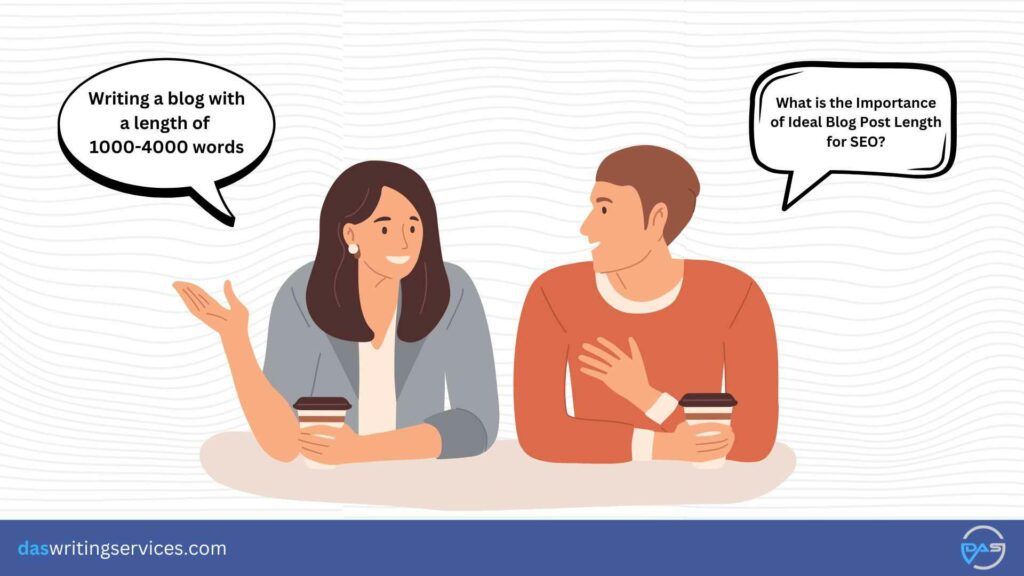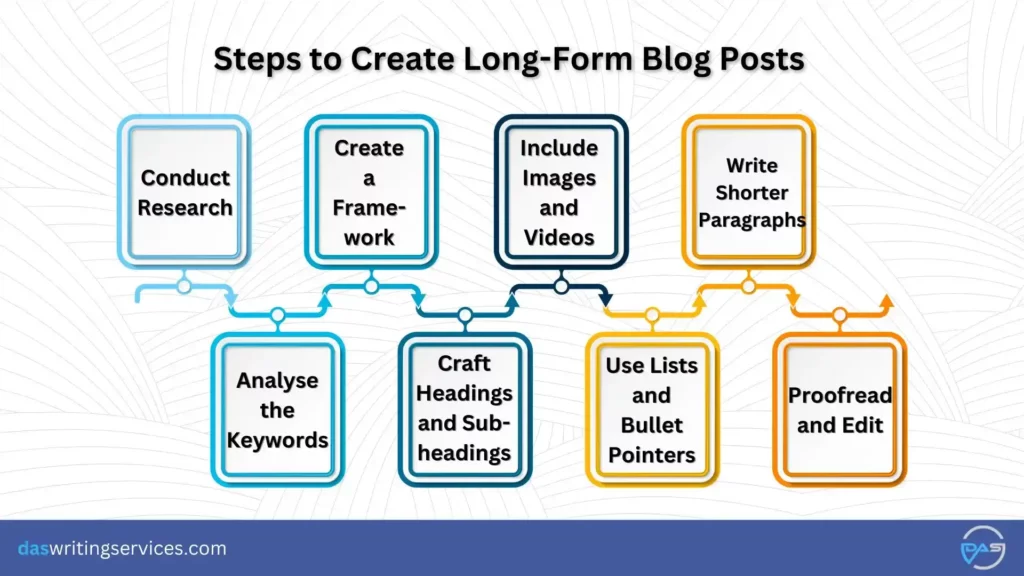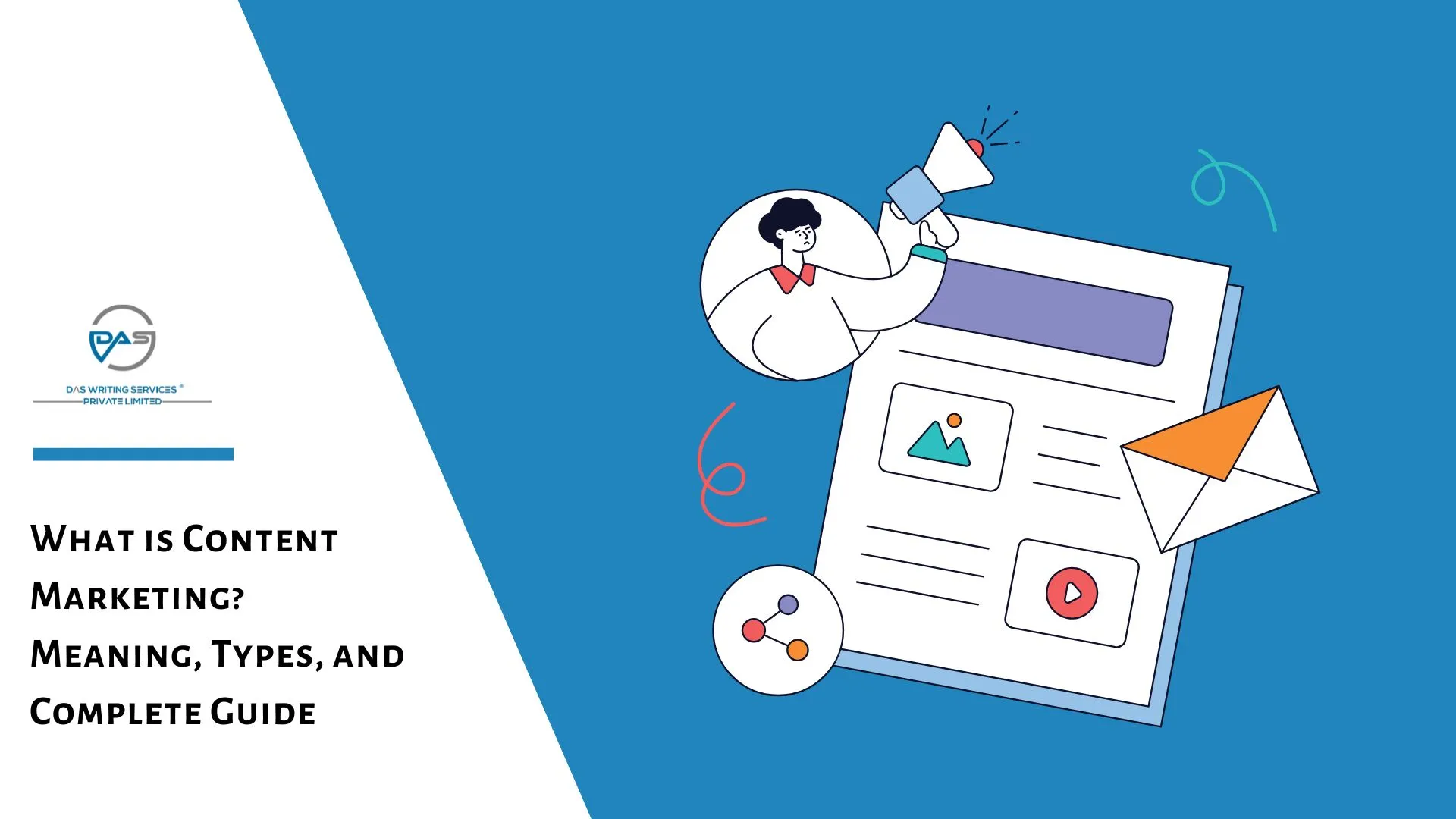How long should your blog post be to attract traffic to your website?
Well, it depends on the content you are crafting and the audience you want to target. It also depends on your audience’s search intent.
Understanding the ideal blog post length will help you craft relevant content and get better SEO results.
Let us examine the ideal blog post length and how long-form content benefits your business.
How Long Should a Blog Post Be?
Several content marketing experts believe 1500-2000 words will be perfect for a blog. On the other hand, others say that the shorter the blog, the better it will perform. For them, the ideal blog post must be 600-800 words in length.
However, the ideal blog post length depends on the audience’s search intent, what you want to say to the audience through your blogs, content type and other factors. It all depends on your target audience and how your audience will react to the content when they read or see it for the first time.
Following is the interconnection between ideal blog post length and the type of content it is generally used for:
- Below 300 words: If you write content less than 300 words, there is less chance that Google will recommend it to the target audience. It will be perfect for the audience to start a conversation and write their opinions. However, the length is not ideal from SEO and social media perspective.
- 600 – 800 words: This length was considered standard in the past. Nowadays, this blog post’s length is too short to show authority and gain a higher rank on the SERP. It will not allow you to write adequate information about a topic.
- 1300 – 1700 words: Under this segment, you will usually find “What is…” type of blog posts. This word-length content usually gets social media shares and has appropriate backlinks. Business owners ask content writing agencies to write promotional blogs and posts within this word length.
- 1700 – 2100 words: To craft “How to…” content, this blog post length is ideal. It helps you to get more traffic on your website and will help you to generate more leads and turn them into potential customers. Furthermore, it drives organic traffic to your website.
- 2300 – 2500 words: Search engines like Google usually recommend this blog post length. Here, you will get listicle articles and informative blogs as they explain everything about a topic. Such articles help the audience to understand a topic and have a higher chance of obtaining better SERP rankings.
- 4000 – 4000+ words: Under this word length, content writers generally write pillar pages or thorough guides for their clients. These posts include everything about a topic and help build authority.
How to Determine the Ideal Blog Post Length?
The ideal blog post length for SEO depends on various factors. Now let us see how these factors help in determining the content or blog length:
1. Recognise Your Goal
If you hire professional writers for your content requirements, they will not simply start writing directly. They do research and analysis related to the content and build strategies before writing the content.
There is a unique strategy for every blog post. First, the writers need to understand why they are writing the blog. Business owners often ask content writers to create content for:
- Improve their SEO ranking
- Boost their reach on social media platforms
- Generate sales leads and convert audiences into potential customers
- Bring out new products or services in the market
2. Blog Topic
The length of your content will vary according to the topic you are writing on. A blog about cooking food will have a different length compared to one about the different visas the US provides to foreigners.
3. Know Your Target Audience
One of the best practices while writing a right-length blog is knowing whom you are writing for. If the writers know the target audience, they can focus on the reader and create content accordingly.
It will help them understand whether they are writing for professionals, amateurs or just for a buyer. In addition, it also helps them to determine whether they need more information on a topic and how they want to proceed with the blog. For example, if you targeting a professional audience, you can try LinkedIn post ideas to draw more traffic.
4. Prioritise Search Intent
It refers to the primary intention of users when they type a keyword into the search engine to look for answers related to their queries. In addition, every blog must have a defined goal that contains every piece of information and should be in tune with specific search intent.
The search intent has the following principal categories:
- Navigational: The audience is looking for a particular website or place. For instance, Das Writing Services website.
- Informational: In this case, the audience seeks something to learn. For instance, “ What is Content Writing?”
- Transactional: The audience is looking to buy a particular service or product. For instance, “Hire a professional content writer.”
- Commercial: Under this segment, the user wants to learn in detail before availing a service or purchasing a product. For instance, “Content Writing Agency vs Freelancer.”
5. How Long are the Competing Blog Posts?
You must research the content put out by other websites on the keyword you are targeting. Check the word count on their pages. This will help you determine the word count for your content.
What is the Importance of Ideal Blog Post Length for SEO?

Writing a blog with a length of 1000-4000 words covers all the aspects of a topic. It includes more backlinks and offers expertise, authority and trustworthiness.
This entire thing impacts the SEO ranking of the blog and boosts the brand’s credibility. The following are the key importance of the ideal blog post length:
1. Boost Website Traffic
Having an ideal blog post length for SEO, the higher the chances of attaining a rank on the first page of SERP. It will increase discoverability and drive more traffic to your website.
2. Improves On-Site Engagement
If you follow the ideal length for your blog and include valuable information inside, the audience will spend more time on the content. It will lead to better on-site engagement as the audience will find your blog practical.
3. More Backlinks
When you write a blog of more than 1000 words, you can add more backlinks to the content. It will improve your brand authority and improve the trust among your customers.
4. Lead Generation
If you have a blog of more than 1000 words, it will have a better SEO ranking. Therefore, it will have a better chance of converting the audience to your potential customers.
5. Content Repurposing
When you craft a blog of less than 1000 words, it gets tough to repurpose the content. However, if you write a blog of more than 1000 or 1500 words, you can easily repurpose it as the content has enough words.
Benefits of Long-Form Blog Posts
Here are some of the benefits of long-form blog posts:
- More Time Spent on Website
Neil Patel’s research shows that people spend more time on webpages with longer content than shorter ones. As people spend more time on your website, the chances of lead and sales generation increase. It also tells search engines like Google that your content is of good quality and can lead to a higher ranking on the Search Engine Results Page (SERP).
- Social Media Success
Long-form content is often shared on social media because of the depth and insight they offer. Such sharing leads to inbound links to your website which can improve your website traffic.
- Establish Authority
Creating long-form content can establish you as an authority in your field. If you can educate and provide value to your audience with your content, it will earn you more reputation and loyalty from them. Once you establish authority over a subject, it is easier for you to generate sales in that field.
Potential Drawbacks of Long-Form Blog Posts
Long-form blog posts can offer readers comprehensive insights on a subject. However, they also come with certain drawbacks that should be considered:
- Time Required for Content Creation and Consumption
Crafting long-form blog posts demands significant time and effort from both the writer and the reader. The process involves extensive research, writing, and editing, which can be particularly challenging for those who are not accustomed to producing lengthy content.
For readers, a lengthy post may feel overwhelming, leading them to lose interest and abandon the article before finishing—especially if the content lacks organisation or engagement.
- Limited Shareability
Shorter content formats, like reels or infographics, tend to be more shareable on social media platforms. As a result, long-form blog posts may struggle to gain traction and reach a wider audience.
They often lack the viral potential of shorter pieces due to their complexity and length, making them less appealing for social sharing. While this doesn’t mean you should abandon long-form content entirely, it’s an important factor to remember before diving in.
- Potential for Diverting from the Main Topic
Writing long-form content can sometimes lead to digressions, where the author strays from the main topic. This can dilute the effectiveness and coherence of the piece.
To maintain focus, it’s crucial to create a detailed outline before you start writing. This strategy will help keep your content organized and ensure that any new topics introduced are directly relevant to your main argument.
How to Craft Long-Form Blog Posts in 2025?
Writing a long-form blog post fulfils the audience’s requirements. It helps them to understand a topic in-depth and answers questions they never had. At Das Writing Services, we follow these steps to create long-form and engaging content for our clients:

1. Conduct Research Before Starting
Before you start writing a blog, you should know its purpose. You need to understand what you want to achieve and how you will achieve it. To do this, you will need to research and understand the topic. You also need to do a competitor’s analysis and understand the target audience.
2. Analyse the Keywords
Once you have set the goal and target audience, your next task will be to select a niche according to your readers’ interest. You will require finding keywords related to your business that will attract the audience to your blog or website.
To do this, you can use keyword planners and blogging tools like Ahrefs, Google Keyword Planner and Semrush. It will assist you in analysing the search volume and difficulty of a particular keyword. Furthermore, you can use Answer the Public to get ideas in question format related to the same keyword.
3. Create a Framework
After analysing the keyword, you need to lay a framework for your blog. It will help you to understand what should go under each section and what other blogs you can link to the content. Furthermore, it will help with appropriate keyword placement, which will help in easy content creation.
4. Craft Headings and Sub-headings
We are short on time when it comes to reading the whole content. However, if you include proper headings defining each section, it becomes easier for the reader to skip to a particular blog portion. Furthermore, you can even break down the topic into H2 and H3 headings.
Having proper headings and sub-headings in your blog will enhance the readers’ experience and help them navigate the entire blog effortlessly. Furthermore, you can even add a table of contents at the start of the blog, so the reader can understand what are the points you are covering in such a blog.
5. Include Images and Videos
It is vital to have a profound visual element when you are crafting a minimum blog post length for your business. Blogs without visual components become monotonous and hamper the user experience.
You can include images, videos, graphs, charts, etc., to visually demonstrate the content you are writing for your audience. According to Semrush, if you include more than 10 images in your blog, it has a higher chance of attaining better results in search engines.
6. Incorporate Numbered Lists and Bullet Pointers
Readers love to read organised and easy-to-follow articles and blogs. If you incorporate bullet pointers and number lists in your blog, it becomes easier for the audience to understand the topic clearly.
In addition, it helps in expanding your ideas under each section and provides more information to your target audience. For instance, while writing a product description or steps blog, bullets and numbered lists will help easily explain the order and the vital information.
7. Write Shorter Paragraphs
While writing a blog, try to keep the paragraph short. You must maintain 50-60 words in a paragraph as it makes the content more engaging and enhances the user experience. It is because mobile devices account for 60% of the total search, according to Statista’s study.
8. Proofread and Edit
After you have written the content, it is time to edit it to maintain its overall quality. You need to check that all the above parameters are followed while crafting the content and conduct a spell and grammatical check.
9. Use Transtion Words
If you are navigating from one point to the other, you must use transition words. It ensures that the reader can easily go through the content without losing track of your writing.
10. Take a Unique Stand
Your content must be well-researched and cover all the points described by your competitors. At the same time, you must also add your perspective on the issue. It is this perspective which will impress your readers and keep them coming back for more content.
In addition, you need to check if it is plagiarised content and whether it has a good readability score. After proofreading the blog, you can ask a professional editor to go through the blog once and spot any mistakes.
Hence, you can contact us for content creation, as we have an in-house team of writers who will craft quality blogs for your website. We even have in-house editors who will proofread the content and ensure that overall quality is maintained.
Final Takeaway
Writing a blog includes many elements other than the word count. These elements help you to achieve better SEO results and reach a large audience. You need to focus on the quality and authenticity of the content, apart from the ideal blog post length. Therefore, the blog post length depends on what you want to write and your target audience.
Frequently Asked Questions
1. Is 1500 words adequate for a blog post?
Writing a 1500-word blog is good for your website. However, there is no fixed rule for the maximum number of words you can write in a blog. If you write a 1500 word blog, you can include more information related to the topic without the audience losing interest.
2. How long does it take to write a 1000 word blog?
If you are hiring professional writers to craft a 1000 word blog, they can write well-optimised content in 3-4 hours. However, for a beginner, it will take more than 6 hours to create well-optimised content for your content.
3. What should be the average blog post length in 2023?
When you are crafting a blog, you must write 1500 – 1700 words to maintain the average blog post length in 2023. It will help you explain the topic in a detailed way to your readers and build authority which will generate more leads.
Subhodip Das is the founder and CEO of Das Writing Services Pvt. Ltd. He has an experience of 12 years in the field of Digital Marketing and specialises in Content Writing and Marketing Strategies. He has worked with well-established organisations and startups helping them achieve increased Search Engine Rank visibility. If you want to grow your business online, you can reach out to him here.




Leave a comment